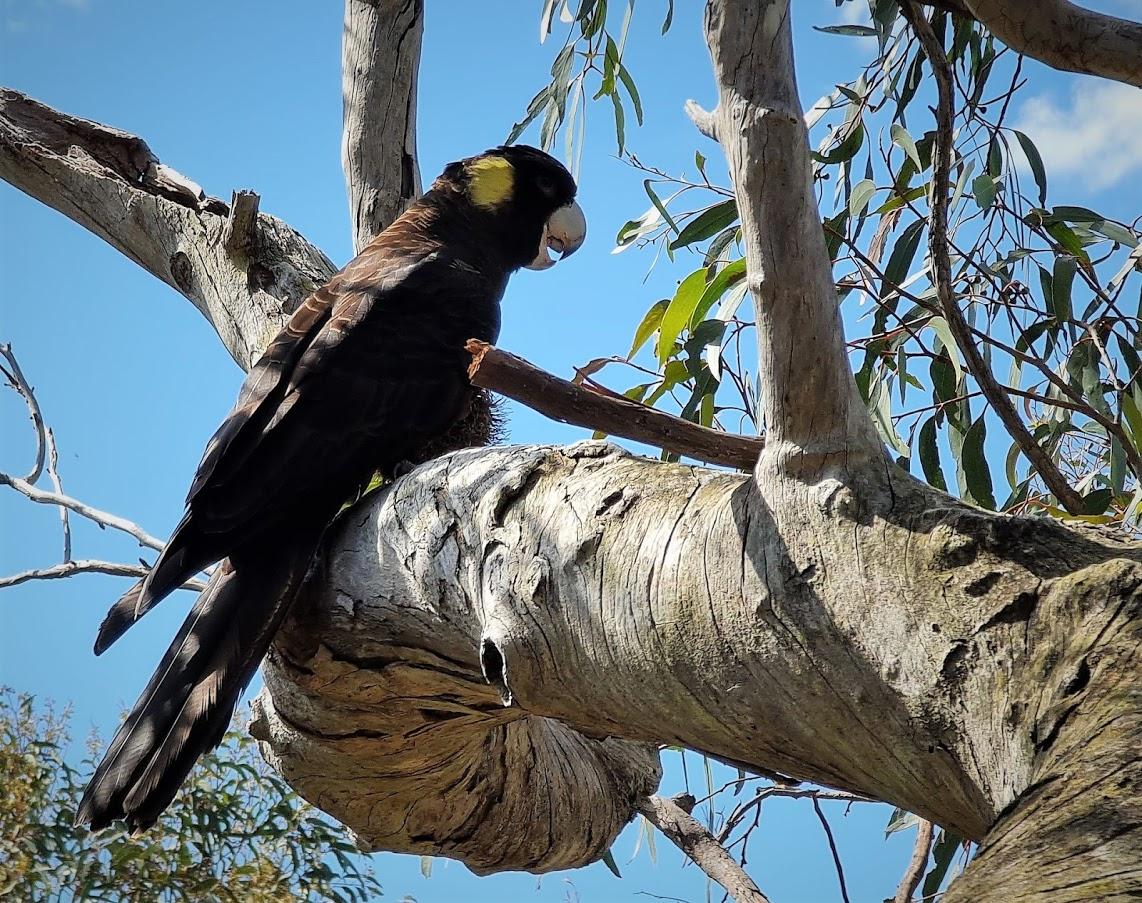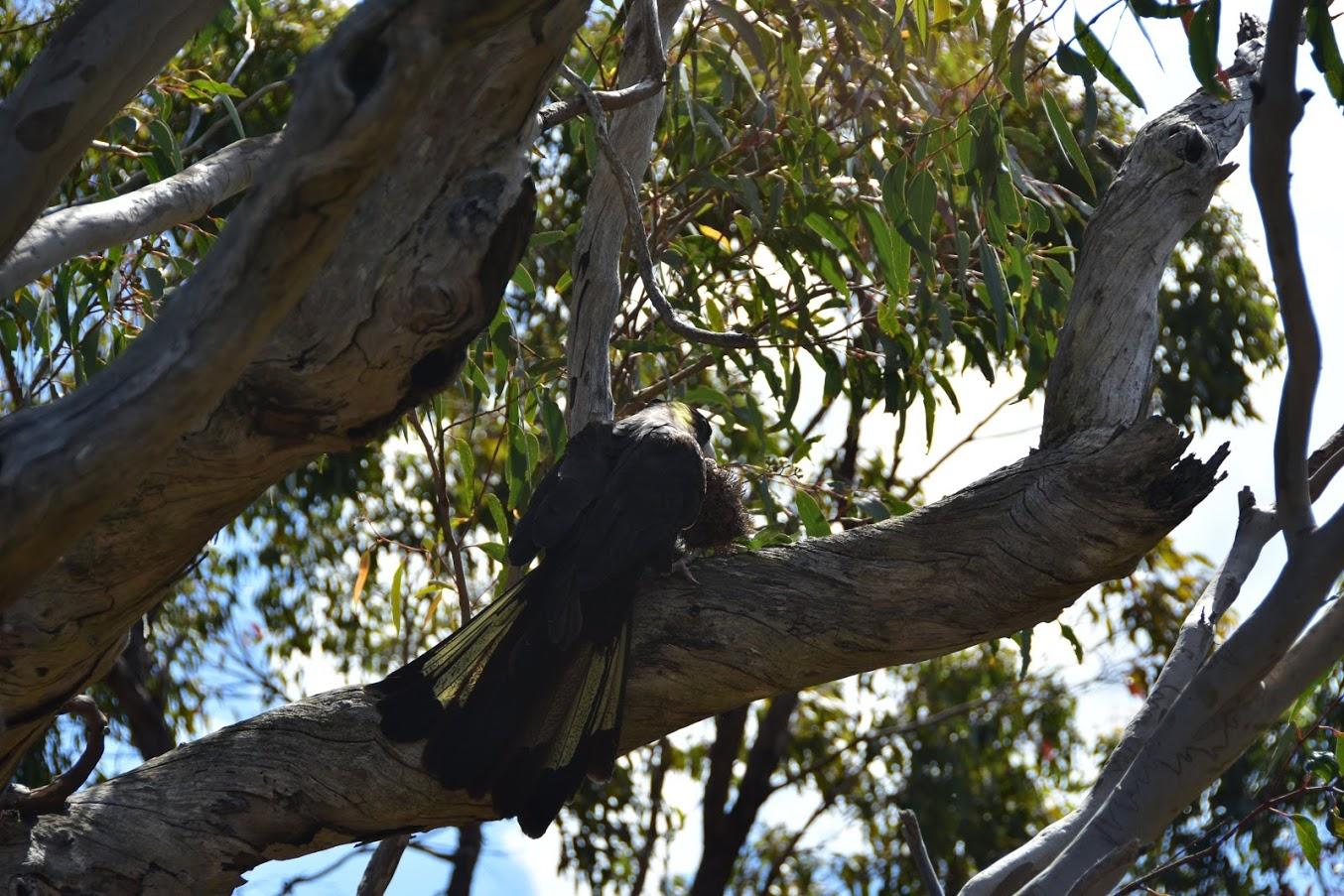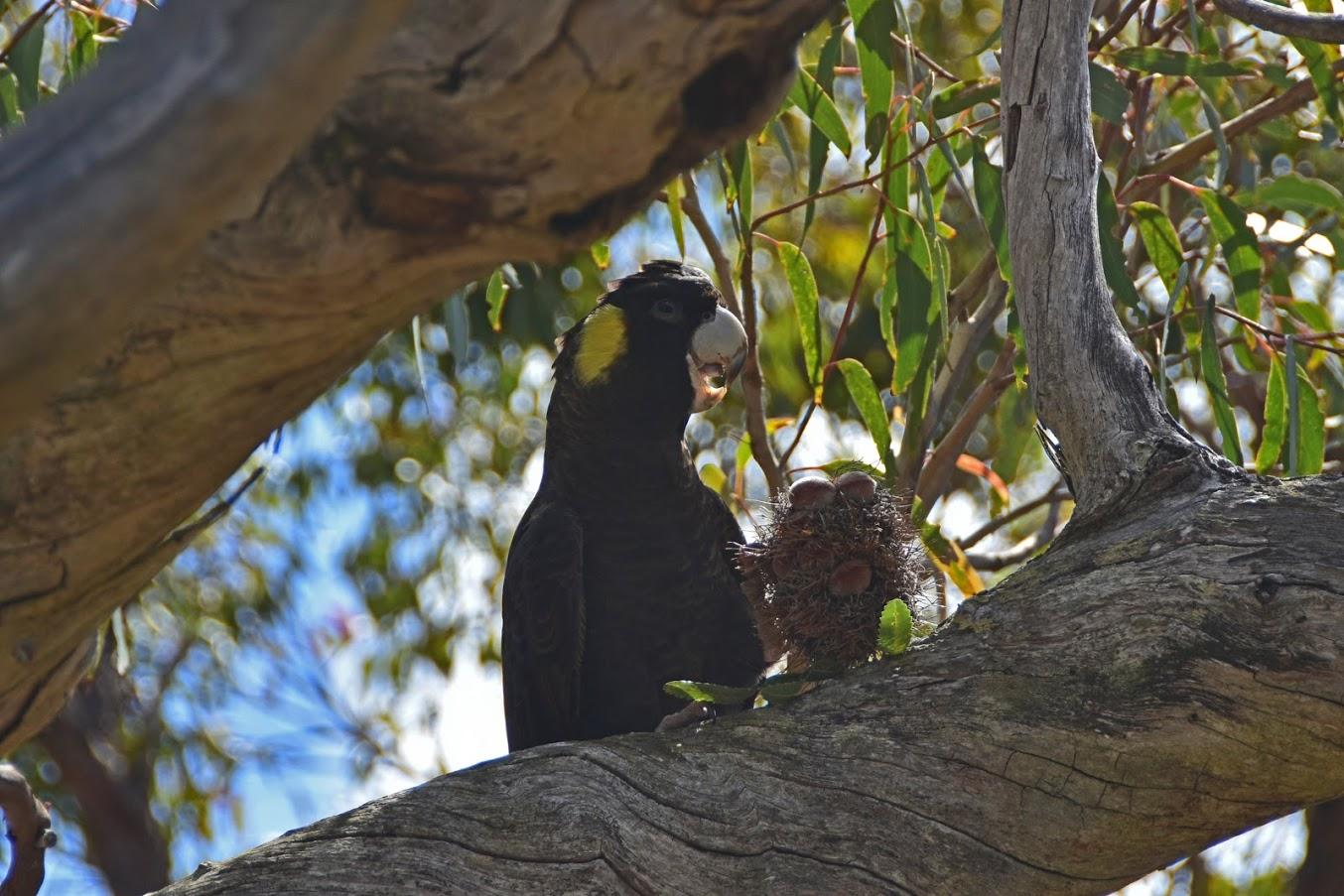Flock Of Black Cockatoos Feasting At North Narrabeen + National Tree Day 2022

Residents of Narrabeen have been expressing their delight in encountering a flock of around 20 black cockatoos at North Narrabeen this week. The birds have been seen in the sand dunes at North Narrabeen feasting on wattle seeds or in people's backyards feasting on banksia. Other residents report they nest in trees at Cromer. A great reason to look after our coastal sand dunes and retain decent size trees for them to roost and breed in.
These photos from an earlier edition of Pittwater Online were taken by Kevin Murray and Joe Mills when they spotted some over at Ku-ring-gai Chase National Park and overlooking Lovett Bay in 2020. The rise of their numbers in our area is an indication they have come seeking food trees and feasting after the devastating bushfires of the 2019-2020 Summer and the ongoing clearing of their habitat and food trees continues elsewhere. Although we have had these wonderful birds as residents for generations, their flocks and where they are seems to be increasing and spreading across our area.


Yellow-tailed Black-Cockatoos were once content to feed on the seeds of native shrubs and trees, especially banksias, hakeas and casuarinas, as well as extracting the insect larvae that bore into the branches of wattles. Now, after the establishment of extensive plantations of exotic Monterey Pines, the cockatoos may feed more often by tearing open pine cones to extract the seeds. The population on South Australia’s Eyre Peninsula is now reliant on the seeds of the Aleppo Pine, a noxious weed, as its preferred habitat, Sugar Gum woodlands, has become extensively fragmented.Research featured in the 'State of Australia's Birds 2015' headline and regional reports indicates a significant decline for the Yellow-tailed Black Cockatoo (and some other parrot species) in the East Coast.